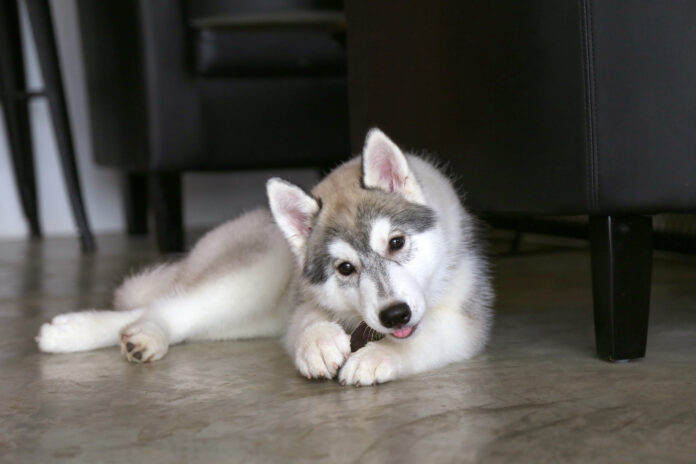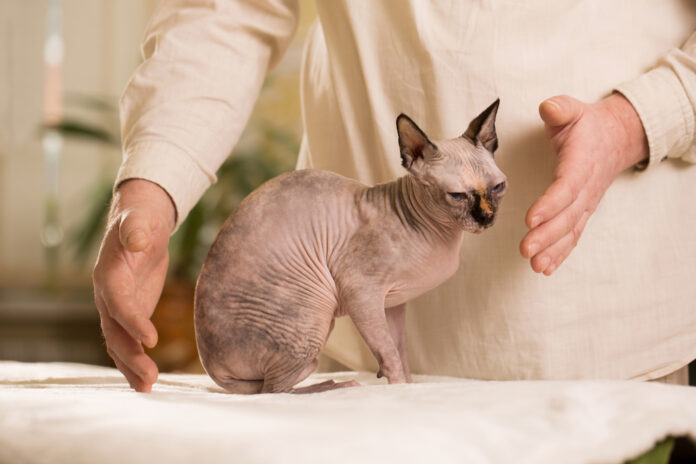Is Your Cat Addicted to Kibble?

Commercial low-end kibbles aren’t good for your cat, but what if he won’t eat anything else? Here are some tips and tricks for adding nutrition to his diet.
Cats don’t like change. They thrive on a regular routine, and that extends to their food as much as anything else. A kitty that has grown accustomed to one type of food usually won’t take kindly to changes in his diet, even if what you’re offering is much healthier than what he’s currently eating. This can be a problem if your feline friend is on a low-end dry food, because it can have a detrimental effect on his health. If you have a kibble-addicted cat, read on for tips on how you can incorporate better nutrition into his diet.
NOT ALL KIBBLE IS BAD
Let’s face it – kibble is convenient. It’s easy to feed, easy to store, and most cats seem to like it. But depending on the product, it may not be good for your kitty. Dry cat foods of questionable quality contain very little meat and are instead high in carbohydrates, which can contribute to weight gain, dental problems, and the development of diabetes. In addition, if the cat doesn’t consume enough moisture to offset the dryness of the kibble, she could develop kidney issues.
The good news is that a growing number of pet food manufacturers are introducing better quality ingredients to their dry diets, while also using processing methods that help preserve the integrity of those ingredients. This means you don’t have to get your cat off dry food entirely, but can simply try switching to a better quality product.
One company that offers nutritious, high quality dry cat food is ZIWI. “We use only the best ingredients, and the best preparation methods available,” says Marketing Manager, Jessica Krueger. “Our recipes are designed with carnivores in mind, and contain 96% meat, organs, bone, and New Zealand green-lipped mussels. The raw ingredients are gently air dried, ensuring the nutrients are locked in.”
Other examples of nutritious, high-end dry cat foods include Applaws and Reveal, whose natural grain-free recipes are made from chicken or whitefish. NutriSource offers chicken, salmon and trout dry foods for cats. “Our recipes deliver compact nutrition formulated with our Good 4 Life System, which includes a proprietary blend of prebiotics, probiotics and highly absorbable trace minerals working together to support gut health,” says Adam Martodam, Marketing Director.
MAKING THE SWITCH
Changing your cat’s diet takes time and patience. Start slow, by adding a small amount of the new food to his existing diet, and gradually increasing the new food while reducing the old. This not only gives your cat a chance to get accustomed to eating something different, but also helps minimize the risk of digestive upsets.
BUMPING UP NUTRITION LEVELS
Sometimes, despite your best efforts, your cat may simply refuse to give up her old food. In this case, you can at least add extra nutrition to her meals by dressing them up with healthier options. Again, start with very small amounts of the new food, to avoid digestive upset, and slowly work up to a level your cat will happily accept.
- Mix in a premium kibble with her current dry food. This might be the easiest route if your cat has always eaten kibble and is accustomed to its form and texture.
- If you want to get your cat eating wet food, try combining a bit with her regular kibble, or use it as a topper. ZIWI, NutriSource, Applaws and Reveal all offer high quality wet cat foods, some of which include savory broths and gravies that are very tempting to cats.
- Consider adding in some raw meat, though keep in mind that it may take longer to get your cat accustomed to it if she’s never eaten it before. Cut the meat up into small kibble-sized pieces, or buy a frozen raw cat food that comes in nugget form. If it more closely resembles her current food in size and shape, she may be more likely to try it.
- Add bone broth to his meals. This palatable and highly nutritious food is also great for adding moisture to the diet, especially for cats that don’t drink enough water. Try these homemade bone broth recipes.
- Look to your fridge or pantry for healthy foods you can add to your cat’s diet, even if just a couple of times a week. For example, a bit of cooked chicken, some ground turkey, or the bones and skin from a can of salmon make a tasty treat and add extra nutrients to her meals.
Kibble-addicted kitties don’t have to be condemned to a lifetime of poor nutrition and the health problems that arise from it. Switching your cat to one of the growing number of high quality dry foods, or adding other healthy foods to his existing meals, will raise the nutritional bar on his diet and help keep him well and happy.

AUTHOR PROFILE

Ann Brightman
Ann Brightman is Managing Editor for Animal Wellness Magazine and Integrative Veterinary Care Journal. A lifelong animal lover, she has also been a writer and editor for over 25 years. Ann is a member of the Professional Writers Association of Canada and is also a Tai Chi instructor.




